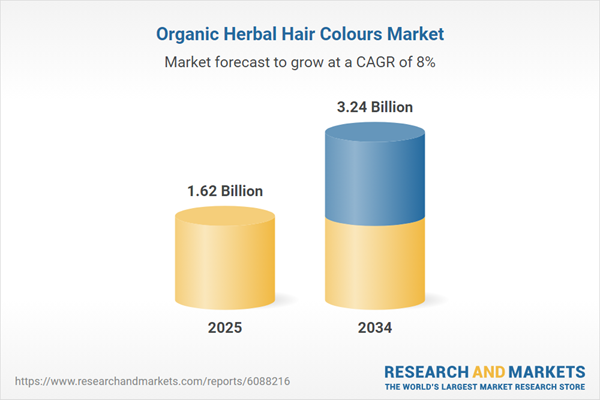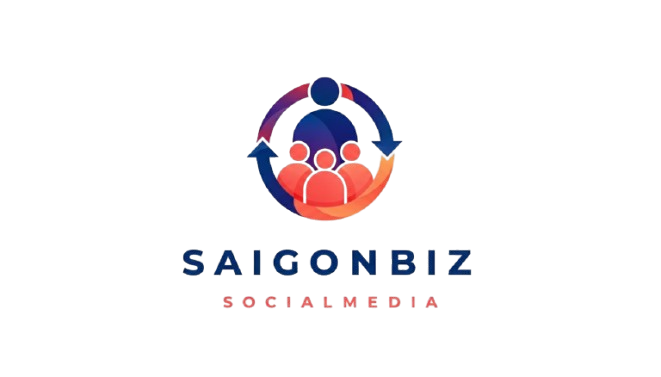The Global Organic Herbal Hair Colours Market is projected to grow from USD 1.62 Billion in 2025 to USD 2.77 Billion by 2032, with a CAGR of 8%. Driven by rising demand for natural products, key trends include clean beauty, influencer branding, and digital-first strategies. Explore growth across North America, Europe, and Asia-Pacific.
Dublin, June 16, 2025 (GLOBE NEWSWIRE) — The “Organic Herbal Hair Colours Market Size, Share, Trends, Analysis, and Forecast 2025-2034 | Global Industry Growth, Competitive Landscape, Opportunities, and Challenges” has been added to ResearchAndMarkets.com’s offering.

The Global Organic Herbal Hair Colours Market, currently valued at USD 1.62 Billion, is projected to experience a significant growth rate, reaching USD 2.77 Billion by 2032, with an impressive CAGR of 8%. The increasing demand for natural and chemical-free hair care solutions is propelling the popularity of organic herbal hair colors, which utilize plant-based ingredients such as henna, indigo, amla, and bhringraj, offering safer alternatives to synthetic dyes.
As consumers become more aware of the detrimental effects of chemical treatments and gravitate towards clean beauty standards, the market is transitioning from a niche to a mainstream category within the organic cosmetics sector. This shift is particularly notable among individuals with sensitive skin, allergies, and environmentally conscious consumers who prioritize sustainability and traditional wellness remedies.
In 2024, innovations in product development focused on enhancing color longevity, ease of application, and alignment with modern hair care routines. This included the introduction of multi-tone color kits, hybrid formulas integrating traditional herbs with conditioning oils, and travel-friendly pre-measured sachets. Distribution has become increasingly digital-first, with North America and Europe leading the adoption of e-commerce and D2C models.
Emerging markets in developing regions are becoming growth hotspots, fueled by cultural familiarity with herbal hair care and a rising urban demand for organic beauty solutions. Future growth will be influenced by personalization, influencer-driven branding, and ayurveda-inspired formulations, embedding herbal hair colors into conscious consumer lifestyles.
Key Takeaways
- Clean beauty trends are propelling demand for organic herbal hair colors, primarily among health-conscious and environmentally aware consumers.
- Ingredients like henna, indigo, neem, and hibiscus are favored for their dual roles in enhancing color and nourishing the scalp.
- Asia-Pacific emerges as a key hub for production and consumption, driven by cultural preferences and a rich supply of herbal raw materials.
- Europe and North America are spearheading the adoption of premium brands due to stricter regulations on synthetic cosmetics and higher disposable incomes.
- Social media influencers and clean beauty advocates play pivotal roles in consumer education and product visibility.
- Cruelty-free and vegan certifications are prioritized to align with growing ethical consumption patterns.
- Challenges include limited color options, longer application times, and variable dye outcomes based on hair type and history.
- R&D is focused on enhancing color retention and simplifying application processes without compromising natural integrity.
- DIY-friendly packaging and single-use kits appeal to millennials and Gen Z seeking convenience and customization.
- Collaborations with wellness resorts and organic salons are boosting brand visibility through experience-based marketing.
- Subscription models and loyalty programs are employed to increase customer retention in a fragmented retail landscape.
- Growing awareness of postpartum hair loss and hormonal sensitivity opens new segments for herbal hair colors.
- Product transparency, including origin and sourcing, is critical for building consumer trust.
- Hybrid formats combining herbal powders and conditioning oils gain popularity for their multi-action benefits.
- Cross-category expansion is anticipated, with herbal hair colors complementing natural shampoos, conditioners, and scalp serums.
Market Specifications
- Base Year: 2024
- Estimated Year: 2025
- Forecast Period: 2026-2032
- Market Splits Covered: By Product Type, Application, End User, Technology, Distribution Channel
Regions Covered:
- North America (USA, Canada, Mexico)
- Europe (Germany, UK, France, Spain, Italy)
- Asia-Pacific (China, India, Japan, Australia)
- The Middle East and Africa
- South and Central America (Brazil, Argentina)
Key Attributes:
| Report Attribute | Details |
| No. of Pages | 150 |
| Forecast Period | 2025 – 2034 |
| Estimated Market Value (USD) in 2025 | $1.62 Billion |
| Forecasted Market Value (USD) by 2034 | $3.24 Billion |
| Compound Annual Growth Rate | 8.0% |
| Regions Covered | Global |
Companies Featured
- Biotique
- Khadi Natural
- Indus Valley
- Radico
- Organic India
- Herbatint
- Surya Brasil
- Light Mountain Natural
- Natulique
- TVAM
- Just Jaivik
- EarthDye
- Sattva Ayurveda
- Himalaya Herbal Healthcare
- Nature’s Essence
For more information about this report visit https://www.researchandmarkets.com/r/z8p0ai
About ResearchAndMarkets.com
ResearchAndMarkets.com is the world’s leading source for international market research reports and market data. We provide you with the latest data on international and regional markets, key industries, the top companies, new products and the latest trends.
Attachment
CONTACT:
CONTACT: ResearchAndMarkets.com
Laura Wood,Senior Press Manager
press@researchandmarkets.com
For E.S.T Office Hours Call 1-917-300-0470
For U.S./ CAN Toll Free Call 1-800-526-8630
For GMT Office Hours Call +353-1-416-8900



